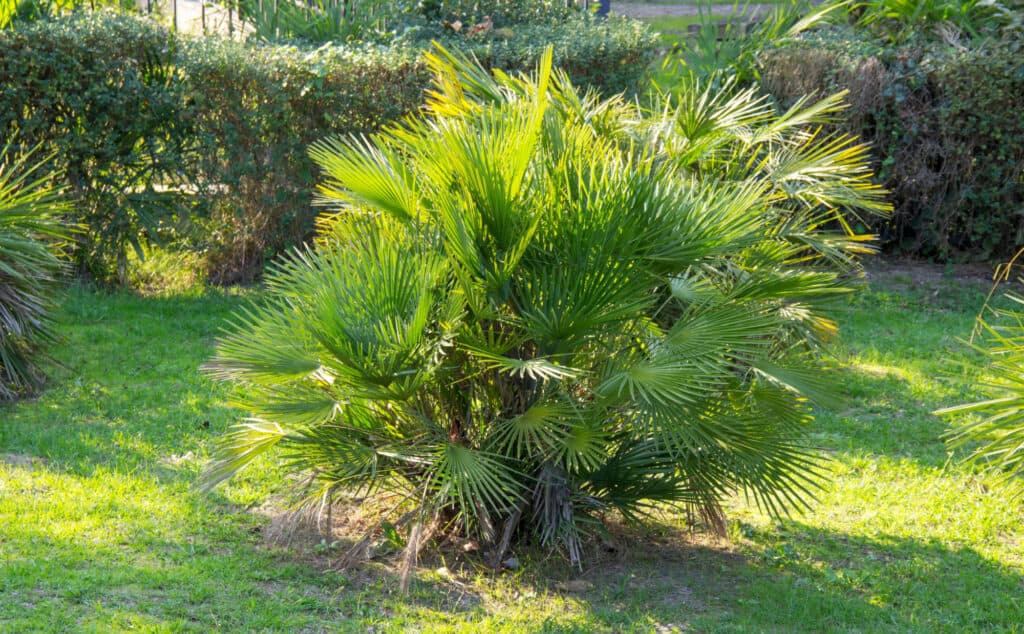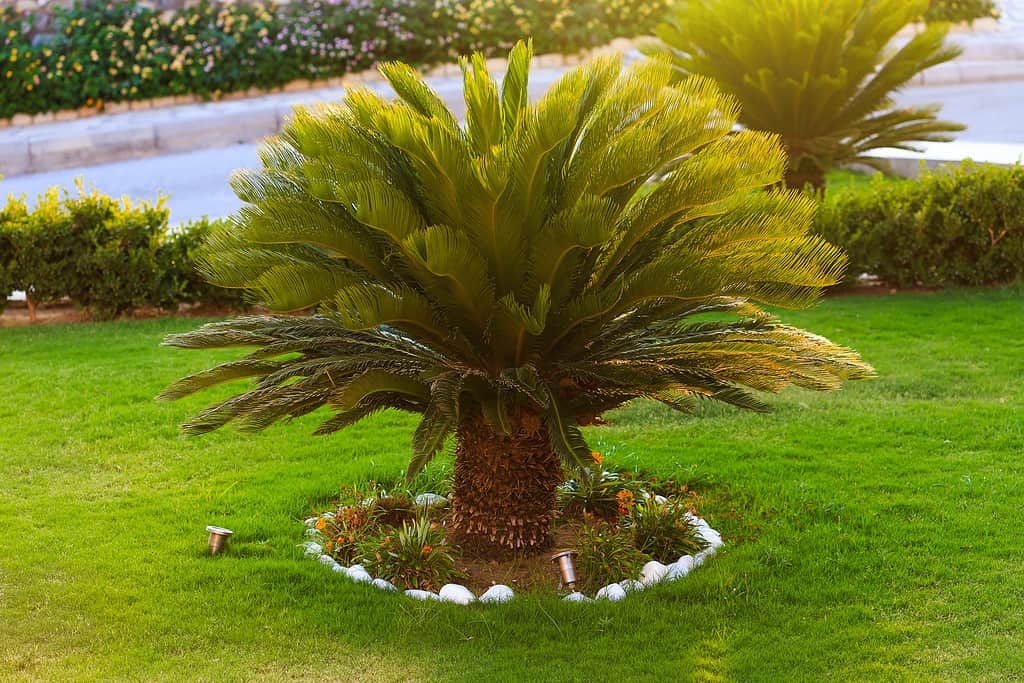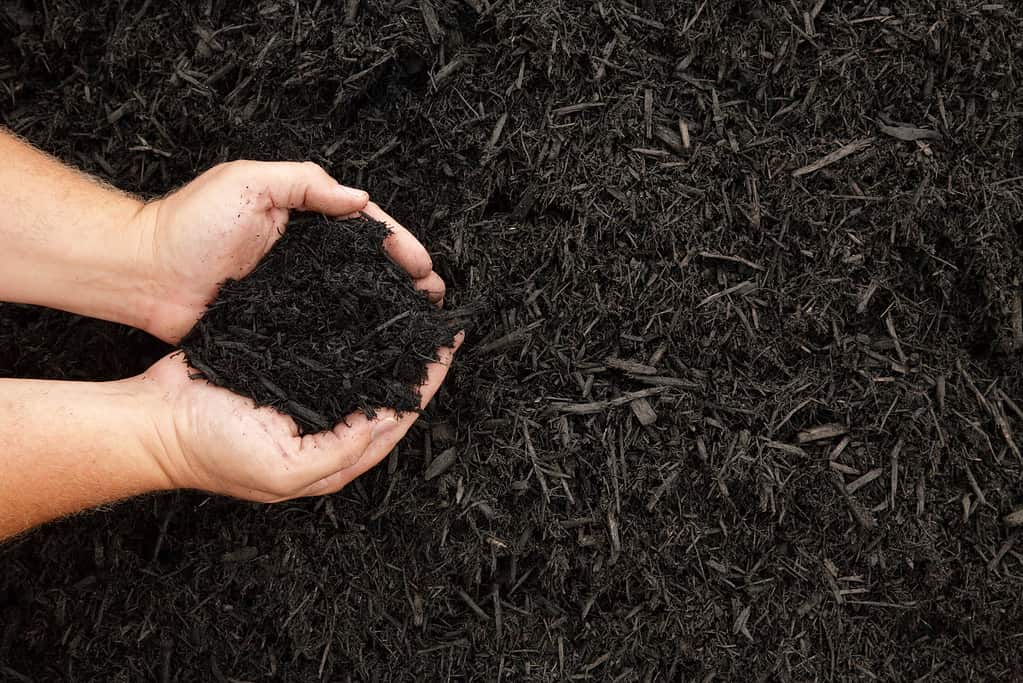No one considers Alabama a cold-weather state. Just the opposite, actually. Located in the Deep South of the United States, Alabama’s climate features mild winters and scorching hot, humid summers. In fact, it is the seventh warmest state on average in the U.S. Alabama is definitely not a cold-weather state… Unless you happen to be a palm tree.
Palm trees are part of the plant family Arecaceae, a family of perennial flowering plants in the monocot order Arecales. There are over 2,600 species of palms, many of which are native to tropical climates that are significantly warmer than Alabama’s subtropical climate.
But fear not, palm aficionados! There are some cold-hardy palms that can thrive in the Yellowhammer State. While not an exhaustive list by any means, let’s talk about some of the best choices for palm growers in Alabama.
Know Your Zone
Selecting the right palm tree for your landscape is largely dictated by the USDA hardiness zone where you live. There are other factors to consider, of course, but none of them will contribute more to the success or failure of your palm tree as your plant hardiness zone.
Technically, Alabama’s hardiness zones range from Zones 7a-9a. However, Zone 7a is confined to the extreme northeast corner of the state, mostly in Jackson and DeKalb counties. Meanwhile, Zone 9a is limited to a tiny sliver of the state around Gulf Shores. The vast majority of Alabamans live in Zone 7b-8b. Again, knowing your specific plant hardiness zone is crucial in selecting a palm that will thrive on your property.
With that in mind, here are some palms that are perfect for bringing a tropical vibe to your Alabama landscape.
Mazari Palm (Nannorrhops ritchiana)
The Mazari (sometimes spelled Mazzari) palm is one of the hardiest palms available today. It is cold-hardy to Zone 6b, meaning it can grow in the coolest zones found in Alabama. It can also grow in climates as warm as Zone 11, so southern Alabamans can also enjoy this palm. The Mazari palm can grow virtually anywhere in the state.
This palm is native to high-altitude deserts in northern Pakistan and Afghanistan. Because of its desert environment, it is exceptionally drought-tolerant. Therefore, well-draining soil will help this desert palm thrive.
This tree is sometimes classified as a shrub since it has no trunk. Several stems grow tightly from a single base. The stiff, leathery leaves are fan-shaped and grow around four feet long. The foliage is bluish-green to grayish-green. Each leaf features 20 or more leaflets that are one to two feet long. The tree can grow 10-20 feet tall, but the rate of growth is relatively slow.

The Mazari palm is a wonderful choice for Alabama growers since it can grow in nearly every part of the state.
©Vipul1989/Shutterstock.com
European Fan Palm Tree (Chamaerops humilis)
This popular palm is native to the Mediterranean and northern Africa. It grows from 10-15 feet high with a spread of 10-20 feet. Growers can decide on the form they prefer. It is naturally a multi-trunk tree, with as many as eight “sucker” trunks growing from the base of the main trunk. Many growers prefer to allow this natural growth of multiple trunks. Others, however, prefer a single trunk. Those growers can simply remove the suckers as they appear to maintain a single-trunked tree.
Also known as the Mediterranean fan palm and the dwarf fan palm, the European fan palm is fairly slow-growing. If you are in a hurry, this is not the palm for you. However, patient Alabama growers can be rewarded with an amazing palm tree.
The European fan palm is cold-hardy to Zone 7b, yet is also heat-tolerant up to Zone 11. It can handle drought and is also salt-tolerant, making it perfect for planting along the Gulf coast. This palm can thrive in almost every Alabama environment.

The European Fan Palm Tree is a multi-trunked palm that is compact and cold-hardy.
©ToKa74/Shutterstock.com
Sago Palm (Cycas revoluta)
The palm tree purists will surely object to the sago palm’s inclusion in this list. The sago palm is not a true palm, but a cycad. Cycads originated in East Africa and are among the oldest plants on Earth. They have been dated to the time of the dinosaurs!
Many cycads feature the same tropical look as a palm tree. Some look so similar they even have palm tree names, like the sago palm. So, with apologies to the palm literalists, we’re including the sago palm in this list because it is a cold-hardy palm(ish) tree that is an exceptional choice for a large majority of Alabama growers.
The sago palm is native to China and Japan. It forms a lovely rosette of pinnate (feather-like) leaves that grow from two to five feet long. The sago palm can grow to heights of seven to ten feet tall, but it is an extraordinarily slow grower. It may take up to 70 years for the tree to reach its full height! However, growers in cooler zones can use this slow growth to their advantage.
The sago palm is recommended for Zones 7b-11. This covers almost every Alabama grower, but we don’t want to forget about palm lovers in that small section of Zone 7a in northeast Alabama. The sago palm’s painfully slow growth makes it an ideal palm for a container that can be placed outside in the spring, summer, and fall, but brought inside during the cold snaps that can move through northern Alabama in the winter.
Is the sago palm tree a true palm? No. Is it an awesome palm-like plant that can be enjoyed by almost every Alabama palm lover? Most definitely.

The sago palm tree isn’t a true palm, but it has a lovely compact palm shape.
©Cristi Kerekes/Shutterstock.com
Mexican Fan Palm Tree (Washingtonia robusta)
For those who insist on a true palm, it doesn’t get any truer than this one! The Mexican fan palm tree is one of the most loved and widely distributed palms in the world.
As the name suggests, these palms are native to Mexico. Their native range also extends to the Baja California peninsula. In fact, these trees have become synonymous with California because they grow along the world-famous Sunset Strip in L.A.

Mexican fan palms are found on California’s famed Sunset Boulevard.
©iStock.com/TheCrimsonRibbon
If you want to bring some of that Cali vibe to Alabama, you can (assuming you live in the right hardiness zone, of course). The Mexican fan palm is rated for Zones 8-11. Roughly speaking, Alabama growers who live south of Tuscaloosa can likely grow healthy Mexican fan palms in their landscapes.
These palms are going to need plenty of space. They are colloquially known as “sky-dusters” because they can grow from 40-80 feet tall. The trunk is slender, especially considering the tree’s prodigious height. The Mexican fan palm’s trunk is around 12 inches wide as the tree grows upward, but is much wider at the base. The branchless tree is topped with a crown of light-green fan-shaped leaves.
The Mexican fan palm is both drought and salt-tolerant. Deer will also move right past it in its early stages of growth. That’s great news for a state like Alabama, which is home to some 1.5 million white-tail deer. The low maintenance, classic palm aesthetic, and California vibe of this tree have made the Mexican fan palm one of the world’s most popular palm trees.
The tree self-propagates through the seeds in its black, pea-sized fruit. Growers will likely need to remove seedlings before they firmly take root. Interestingly, this tree that is so connected with California is now considered moderately invasive in some portions of the state by the California Invasive Plant Council.

Mexican fan palms grow to heights up to 80 feet.
©iStock.com/SlavkoSereda
Palm Tree Basics
Palm trees are typically low to no-maintenance trees. Here are a few quick tips to help your palm trees thrive.
Planting
Choose a well-drained site that receives a good bit of sun. Most palm trees can tolerate some shade, but they are tropical trees that need to soak up the sun. Choose a planting location that receives a minimum of six hours of sunlight per day.
Select a site that drains well. Some palms can tolerate waterlogged soil, but most prefer well-draining soil.
Dig a hole nearly the height of the root ball. The very top of the root ball should rise just above the soil line. Dig the hole about twice as wide as the width of the root ball.
Place the tree in the hole and make sure it is standing straight. Check from multiple angles to ensure it is perfectly upright.
Fill in the hole with 50% of the native soil and 50% of a commercial potting mix. Water the palm tree deeply at planting and cover the base with one to two inches of mulch. Continue to water the tree each day for the first week.

Mulching keeps the soil moist to help newly-planted palm trees establish.
©iStock.com/witmerphotography
Establishing
After that first week of daily watering, scale back the watering to twice a week. Do this for the next two to three months. After that, you can limit or just completely stop watering the tree. Most palms are drought tolerant after they are established, which takes around three months on average.
Fertilizer can help your tree get off to a healthy start. It can also be helpful after the tree is established, particularly if the soil is low in nutrients. Use a slow-release fertilizer at planting and then again the following spring. In extremely poor soil, fall fertilizing can also give the tree a boost.
In cooler zones such as Zone 7, growers can wrap young palm trees with frost cloth or burlap in particularly cold weather. If a palm is cold-hardy, it will likely not need such treatment as it becomes more well-established. But this type of protection, especially in the tree’s first winter, can provide an extra level of protection against the chill. Also, adding a thick layer of mulch in the winter can protect the roots from cold winter temperatures.
Pruning
Most palm trees need little to no pruning. However, some growers prefer to remove damaged or dead foliage. This helps speed up the growth of new, healthy foliage. It is not necessary for most palm trees, though. With a few exceptions, the foliage of most palms will die back and fall away naturally. But if you want to speed things along and cut away that old foliage, it will help the tree produce new growth faster.
The photo featured at the top of this post is © iStock.com/Chase D'animulls
Thank you for reading! Have some feedback for us? Contact the AZ Animals editorial team.






